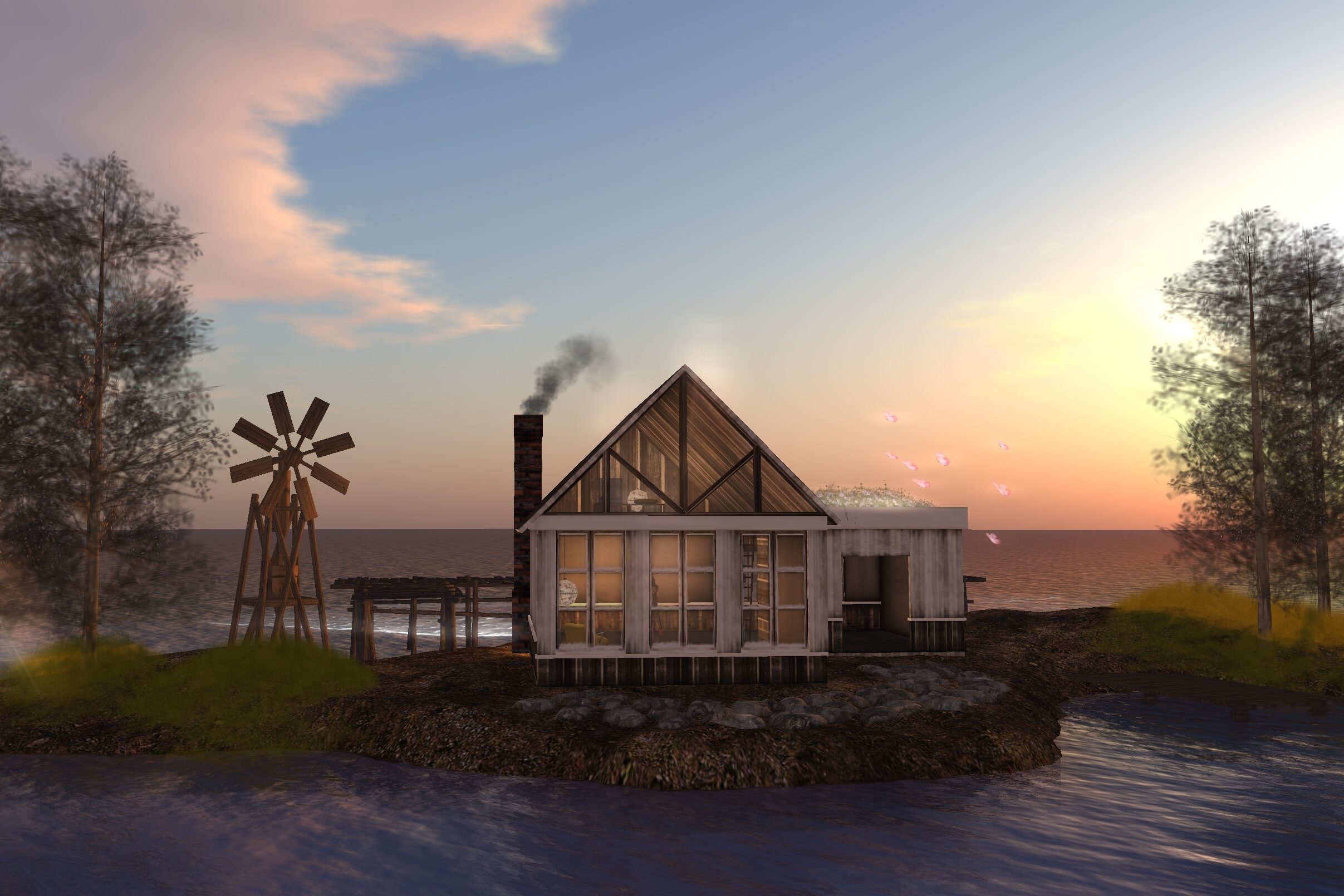How can we collaborate with digital avatars? How do social interactions work in a world where real and virtual space and our presence in them merge? What technologies do we need to not only exist and act in such spaces, but also to shape them together?
SHARESPACE is an ambitious research project funded by the European Commission and implemented by 14 partners from eight countries: two university hospitals, three universities, four research institutes, four companies, and the Ars Electronica Futurelab are on board. The aim is to develop new forms of digital interaction that can be experienced physically, socially, and emotionally. SHARESPACE started in January 2023 and will end in December 2025.
While the universities and research institutions involved in the project are responsible for the scientific foundations and technological implementation, the Ars Electronica Futurelab contributes artistic and experimental perspectives. Using hybrid artworks, the team aims to explore the new possibilities this technology can offer for media art.

From MUDs to the metaverse: A brief history of virtual worlds
Virtual worlds have been around longer than you might think. It all began in the 1970s with so-called multi-user dungeons (MUDs) – purely text-based adventure games in which several people acted simultaneously in a shared world and shared narrative. These early environments were the first step toward digital coexistence.
In the 1980s, things really took off visually: Lucasfilm launched “Habitat,” one of the first graphical online worlds for the Commodore 64. The 1990s took us into three-dimensional spaces for the first time: platforms such as Active Worlds and WorldsAway allowed users to create avatars and wander through colorful 3D worlds.

Another milestone followed in 2003 with Second Life – a world that invited people not only to explore, but also to help shape it. People founded companies, designed exhibitions, and made friends – all in virtual realms. This development culminated in what we now refer to as the metaverse: boundless, immersive spaces where we can meet, work, learn, celebrate, shop, and love.
It is a vision that is highly polarizing: for some, it is the next stage in the evolution of the internet, a place of limitless possibilities. For others, it represents escapism, surveillance capitalism, and a flight from reality. Long before any technical implementation, the metaverse was part of cultural imagination. The term itself was coined in 1992 by Neal Stephenson in his novel “Snow Crash.” The dystopia, which won the Golden Nica at the Prix Ars Electronica in 2000, presents an early vision of the metaverse. Ernest Cline’s bestseller Ready Player One, published in 2011 (and the film of the same name produced by Stephen Spielberg), also picked up on the idea. Both make it clear how strongly our ideas about the future are shaped by art and culture. And, of course, there is the company that, not coincidentally, renamed itself “Meta” in 2021. The former Facebook Inc. has made the vision of a metaverse a central part of its corporate identity and is attempting to establish a digital infrastructure that encompasses as many areas of life as possible through investments worth billions.

But what do these worlds actually look like today? And how can digital and physical reality be interwoven? Projects such as SHARESPACE attempt to provide an artistic and technological answer to this question. At the heart of this are Shared Hybrid Spaces (SHS): immersive XR environments in which people, their digital avatars, and AI agents can interact and cooperate.
One example is the interactive work “Converge,” which brings central concepts of SHARESPACE such as movement amplification, cooperation, and interaction with avatars to life in an artistic way, focusing on the role of the human body as a central medium of communication. In a minimalist black-and-white environment, up to ten participants present on site interact with a person who is remotely connected via a motion capture suit. All interactions are exclusively nonverbal, using movements and body language. Together, the participants must now solve tasks that can only be accomplished through precise coordination and cooperation. A collective dynamic emerges in which synchronization and social connectedness become not only observable but also physically tangible (embodied collaboration).
Projects such as “Converge” focus on people. They are about connection and trust – and about how we can design and use technology in such a way that it expands our capabilities and possibilities rather than replacing them.
Virtual spaces, real impact
In the future, we will no longer work (together) only in offices or factory floors. Instead, we will increasingly find ourselves in virtual environments where we encounter avatars, some of which will be controlled by other people and others purely AI-generated entities. SHARESPACE combines technology, research, and art to develop hybrid spaces where physical and digital reality merge. Whether in healthcare, sports, or the arts, the focus is on environments where “embodied collaboration” between humans and avatars can succeed.
In the medical scenario, for example, a VR-based back pain therapy is being tested that will enable patients to perform their exercises at home. They are supported by avatars of other participants, creating a motivating, collaborative setting that works regardless of location. The research is being coordinated by the Universitat Jaume I de Castelló, and the therapy is taking place at the Vall d’Hebron hospital in Barcelona.
A central principle in SHARESPACE is what is known as amplification: movements whose intentions are barely visible in the real world – such as whether someone wants to drink a glass of water or pour it out – can be amplified in virtual space in such a way that their meaning becomes clearly recognizable to others. This helps to make unconscious or difficult-to-interpret gestures legible in terms of their intention, thereby significantly improving interaction between humans and machines.
This idea is also being applied in sports research. The team at Inria is working with the M2S Lab at the University of Rennes 2 to analyze how AI, supported by amplification, can help detect microscopic signals in the body language of cyclists—such as the first signs of an “attack,” i.e., a sudden burst of speed by riders in the peloton.
In competitive sports, fractions of a second determine success or failure. Those who recognize early on that their fellow competitors are about to attack can react more quickly, whether by increasing their own speed, positioning themselves tactically, or providing targeted support within the team. AI-supported motion detection allows this moment to be digitally reconstructed and used for training purposes, enabling athletes to learn how to better read these subtle cues.
Cyntha Wieringa is an artist and researcher at Ars Electronica Futurelab, and sums it up succinctly: “Humans are not perfect observers. But AI can help us to reveal movement patterns that we would otherwise overlook.”
SHARESPACE is a prime example of a new generation of European research projects that aim not only to develop technology, but also to design it in a way that is people-friendly. While physical “sharespaces” are used to investigate how humans and machines can work together on construction sites, in factories, or in road traffic, virtual “sharespaces” are giving rise to new forms of social interaction between avatars, bots, and real people.
Unlike commercial XR and metaverse projects, which primarily aim to increase efficiency, scale, or entertain, SHARESPACE takes a different approach: it is about participation, ethical reflection, creativity, emotions, and togetherness.
Between the cloud and the couch: avatars in the context of art
The Ars Electronica Futurelab is designing the artistic branch of the project. Experiments such as “Converge,” “Falcon Heavy,” and “State of Play” create immersive XR experiences that bring synchronization, interaction, and emotional connection to life. Questions such as the following are explored: How does it feel to synchronize with a non-human avatar? Can a virtual character trigger genuine connection?
“We want to do the unexpected,” says Cyntha. “We want to bend technology in a direction that wasn’t intended and find out what happens. Sometimes it works, and sometimes it doesn’t.”
An important component of SHARESPACE is the Open Call for artists initiated by Ars Electronica Futurelab. It invites international media artists to artistically explore and interpret the scientific and technological concepts of the project and to develop their own works for Deep Space 8K. In the summer, they spend several weeks on site in Linz to test their ideas and translate them into performative artworks, which are then presented as part of the Ars Electronica Festival.

Ethics by design: responsibility as a foundation
Collaboration with avatars sounds fascinating, but it poses ethical challenges. Can virtual proximity replace real encounters, or should it rather complement them? How can we tell whether an avatar is responding empathetically or is simply programmed to mirror us? Who sets the rules in a space that we share not only with other people, but also with “intelligent” machines? And finally, how inclusive are such highly developed systems really? Will they create broad access or new digital divides?
At SHARESPACE, ethics is not an afterthought, but an integral part of every step of the process. That’s why our own ethics team accompanies the process from the very beginning – not as a moral authority, but as a reflective counterpart. Six core principles guide our work: trust, autonomy, responsibility, data protection, emotional connection, and transparency.
Instead of hoping for the perfect solution, SHARESPACE strives for “good enough ethics.” Why? Because ethical perfection is impossible, but thoughtful, continuous reflection is absolutely necessary. In workshops, the project partners run through hypothetical scenarios: How do students react to emotional avatars in learning apps? How transparent must patients be informed about AI-supported therapies? There are not always answers, but it is crucial to ask these questions.
Humans and avatars – a shared rhythm
SHARESPACE touches on topics that affect us all: How do we want to live in the future? How do we want to learn, work, spend our free time, and share things that are important to us together with other people? And how can we design digital spaces for this where we feel safe, respected, seen, and inspired?
“It will be exciting when the digital space does not replace the real world, but rather expands it. Then the impossible will suddenly become possible.”
– Cyntha Wieringa
As always, the answer lies not in the technology itself, but in how we choose to use it. How and for what purposes do we want to develop and deploy it? From the perspective of the Ars Electronica Futurelab, it is clear that we need a great deal of curiosity, ethics, and creativity in order to achieve innovation that is not merely aimed at economic gain and technical progress, but that places people and their needs at the center.

Cyntha Wieringa
Cyntha Wieringa is a researcher and artist at Ars Electronica Futurelab. Her background is in science and technology studies, where she teaches about the constant co-creation between science, technology, and society—topics that connect seamlessly with those of Ars Electronica. Her strength therefore lies in promoting reflection on technological innovations in various open research formats. During her time at the Futurelab, she was active in the XR research projects SHARESPACE and NeXus Open Research, as well as in the Data Art & Science Project.
